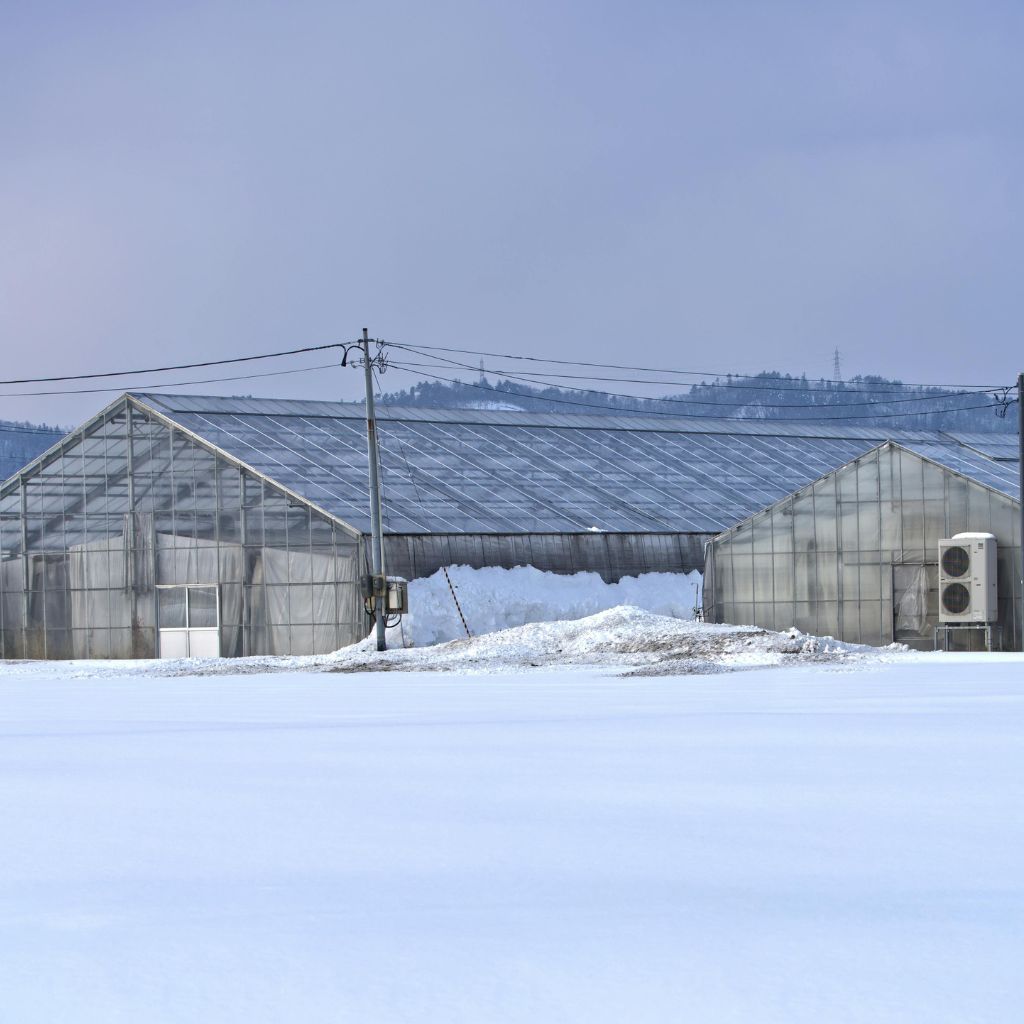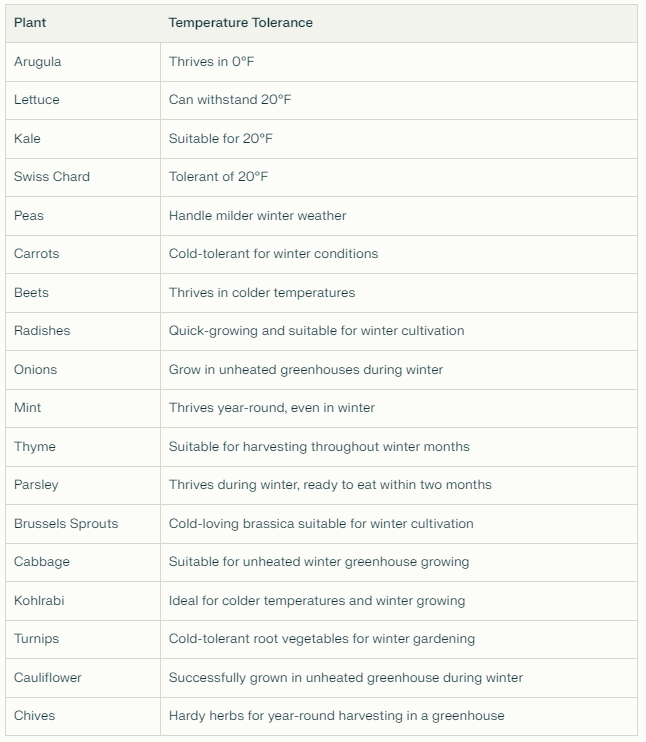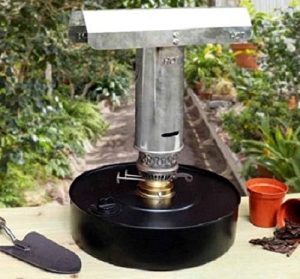Key Takeaways
- Insulate with bubble wrap or foam boards for winter greenhouse temperature control.
- Choose a heating system that suits the size of your greenhouse and the needs of your plants.
- Use thermal mass, like water barrels, to absorb heat during the day and release it at night.
- Install a thermostat to maintain consistent temperatures and save on energy costs.
- Regularly check for drafts and seal any gaps to prevent heat loss.
Unlock the Warmth: Preparing Your Greenhouse for Winter
When the chill of winter sets in, it’s not just us humans who feel the cold—our plants do, too. That’s why it’s crucial to prepare your greenhouse for the colder months. A warm and cozy greenhouse can be the difference between a thriving winter garden and a frostbitten one. So let’s get started on keeping your green thumb green, even when it’s white outside.
Quick Tips for Maintaining Warmth
Before we dive deep, here are some quick-fire tips to keep your greenhouse toasty:
- Double up on glazing or use horticultural bubble wrap for quick insulation wins.
- Consider a small electric heater for a quick temperature boost on particularly cold nights.
- Keep an eye on the weather forecast and be ready to react to sudden temperature drops.
Understanding Plant Needs
Every plant is unique—some like it hot, and some can handle the cold. Knowing what your plants need is the first step to effective winter greenhouse temperature control. Let’s ensure our leafy friends have everything they need to make it through the winter.
The Essentials of Winter Greenhouse Temperature Control
Let’s get down to the nitty-gritty of keeping your greenhouse at the perfect temperature during those winter months. It’s not just about cranking up the heat, it’s about smart, sustainable practices that keep your plants happy and your energy bills low.
Why Temperature Matters
Temperature plays a huge role in plant growth. If it’s too cold, plants go dormant. If it’s too hot, they can wilt or die. The right temperature keeps your plants’ metabolic processes ticking over, even in the dead of winter. That’s why a well-managed greenhouse is a haven for year-round growth.
Identifying Your Greenhouse’s Thermal Weak Spots
Like a detective, you’ll need to find the culprits of heat loss in your greenhouse. Check for drafts around doors, vents, and joining points. Feel for cold spots on the walls. Once you know where the heat is escaping, you can take steps to stop it in its tracks.
Now that we’ve identified where your greenhouse might be losing heat, let’s talk about how to keep that warmth where it belongs. Proper insulation is key, but so is the method of heating you choose. It’s a bit like putting on a warm coat in winter, you want to keep the heat close to your body—or in this case, your plants.
Effective Heating Strategies
Choosing the right heater for your greenhouse depends on several factors, including the size of your space and the types of plants you’re growing. But the principle remains the same: provide consistent, gentle warmth without overheating your plants or your budget.
Choosing the Right Heater
There are several types of heaters to consider for your greenhouse:
- Electric fan heaters are versatile and can distribute heat evenly.

- Gas heaters are powerful and can heat larger spaces effectively.

- Paraffin heaters are an old-school option, but they require good ventilation to prevent fume buildup.

Most importantly, whatever heater you choose should be designed for greenhouse use to ensure safety and efficiency.
Strategic Heater Placement
Where you place your heater can make a big difference. You want to avoid hot spots and ensure even distribution of warmth. Ideally, place heaters near the center of the greenhouse, but keep them away from water and any flammable materials. Always follow the manufacturer’s instructions for the safest setup.
Insulation Techniques
Insulation is your best friend when it comes to keeping your greenhouse warm. Here are some effective ways to insulate:
- Line the interior with bubble wrap, especially over the windows, to trap heat.
- Use foam boards or reflective materials on walls to retain warmth.
- Consider investing in double-glazing for long-term energy savings.
Passive Heating Solutions
Besides active heating, passive heating solutions can help maintain a comfortable temperature without ongoing energy costs. These methods take advantage of natural resources, such as sunlight, to keep your greenhouse warm.
Passive heating is all about making the most of what Mother Nature gives us for free. It’s a sustainable approach that can save you money and reduce your environmental footprint. Let’s look at how you can harness these solutions.
Utilizing Solar Energy
Solar energy is a powerful ally in the fight against the cold. By positioning your greenhouse to maximize sun exposure, you can collect and store solar energy during the day to keep the greenhouse warm at night. This is where your choice of greenhouse material makes a difference—polycarbonate panels are excellent for trapping heat.
Thermal Mass to Regulate Temperature
Thermal mass materials absorb heat when it’s available and release it when temperatures drop. Common thermal mass materials include:
- Water barrels painted black and placed where they can absorb sunlight.
- Stone or concrete floors that soak up heat during the day.
- Brick or cinder block walls that act as heat reservoirs.

Monitoring and Adjusting Your Winter Greenhouse Temperature Control
Keeping an eye on the temperature inside your greenhouse is vital. You don’t want to cook your plants or let them freeze. Regular monitoring allows you to make adjustments as needed to maintain the ideal environment for growth.
Thermometers and Thermostats
A reliable thermometer is a must-have in any greenhouse. A thermostat takes it a step further by automatically adjusting temperatures. This can be a game-changer, especially if you can’t be in the greenhouse all the time.
Here’s a simple example: you set your thermostat to keep the greenhouse at a steady 65°F. Overnight, the temperature drops outside, but inside, your plants remain snug because the thermostat kicks in and adjusts the heater output to maintain the set temperature.
When to Heat and When to Vent
Even in winter, greenhouses can get too hot, especially on sunny days. That’s why ventilation is just as important as heating. Knowing when to open vents to release excess heat and when to close them to retain warmth is a balancing act that’s key to your plants health.
Keeping Cold at Bay: Insulation and Sealing
Insulation and sealing are like the defensive line in the battle against the cold. They work together to keep the heat in and the cold out. Let’s make sure your greenhouse is buttoned up tight.
Best Materials for Insulation
When it comes to insulation, here are some of the best materials you can use:
- Bubble wrap: It’s not just for packing—bubble wrap is an inexpensive and effective insulator for greenhouses.
- Foam boards: These can be cut to fit and offer excellent insulation.
- Horticultural fleece: This can be draped over plants for an extra layer of protection on cold nights.
Sealing Tips to Prevent Drafts
Sealing is all about attention to detail. Here are some tips:
- Check around doors, vents, and any seams in the greenhouse structure for drafts.
- Use weather stripping or silicone caulk to seal any gaps you find.
- Remember that even small gaps can let out a lot of heat, so be thorough in your checks.
Temperature Regulation: Humidity and Ventilation
Temperature isn’t the only thing you need to regulate in your greenhouse, humidity and ventilation are also crucial. They affect plant health, disease prevention, and overall growth conditions.
Managing Humidity Levels
High humidity can lead to mold and disease, while low humidity can stress plants. Use a hygrometer to monitor humidity levels and aim for a balance that supports your plants needs.
Winter Ventilation Techniques
Ventilation in winter might seem counterintuitive, but it’s necessary to prevent overheating and manage humidity. On sunny days, crack open vents or doors just a bit to allow fresh air in and excess moisture out. But remember to close them before temperatures start to drop in the evening.
Grow Smarter: Choosing the Right Plants for Winter
As you’re bundling up your greenhouse, don’t forget to consider the plants themselves. Some are naturally more resistant to the cold and will thrive in a winter environment with just a little extra care. Choosing the right plants for your winter greenhouse not only ensures their survival but also reduces the need for intensive heating, making your green efforts even greener.

Hardy Varieties for Colder Months
When it comes to selecting plants that can handle the cooler temps, here are a few champions:
- Kale: This leafy green is not only nutritious but also cold-hardy.
- Spinach: Another green that can handle the cold and keep on giving.
- Carrots: These root vegetables actually get sweeter with a touch of frost.
These plants are just a few examples of what can thrive in your winter greenhouse. Remember, a plant’s resilience can be your ally in maintaining a productive winter garden.
Adjusting Plant Placement Within the Greenhouse
Plant placement in your greenhouse can play a big role in their survival during the winter. Place cold-hardy plants near the edges where it might be cooler and keep the more tender plants closer to the heat source. This strategic placement ensures that all your plants get the temperature conditions they need to thrive.
FAQs for Winter Greenhouse Temperature Control
Gardening enthusiasts often have questions about maintaining their greenhouses during the colder months. Here are some answers to the most common queries:
How do you prevent a greenhouse from freezing at night?
To prevent your greenhouse from freezing at night:
- Insulate with bubble wrap or foam boards.
- Use a heater suited for greenhouse use and set it to a temperature just above freezing.
- Place thermal mass objects like water barrels inside to release stored heat overnight.
What is an ideal temperature range for a winter greenhouse?
The ideal temperature range for a winter greenhouse is typically between 45°F and 50°F for cold-tolerant plants. However, for more tender plants, maintaining a temperature above 55°F might be necessary.
Can you use a regular space heater in a greenhouse?
While you can use a regular space heater in a greenhouse, it’s not always the best choice. Space heaters can cause hot spots and may not be as efficient or safe as heaters designed specifically for greenhouse use. Always ensure any heater you use is safe for the damp greenhouse environment and is set up to avoid fire risks.
How do thermal mass materials like water barrels help with heating?
Thermal mass materials like water barrels help by absorbing heat during the day and then slowly releasing it at night, which helps to maintain a stable temperature in the greenhouse. This can be particularly useful during those cold winter nights.
How often should you ventilate a greenhouse in winter?
You should ventilate your greenhouse on sunny winter days when the temperature and humidity inside can rise quickly. A few minutes of ventilation is usually enough to exchange the air and stabilize conditions. Just be sure to close everything up before the sun goes down to retain the heat for the night.
And there you have it—your comprehensive guide to maintaining the perfect temperature in your winter greenhouse. But let’s not forget that gardening is also about sharing the joy and the bounty. If you’ve found these tips helpful, why not spread the warmth? Refer a friend who loves gardening just as much as you do, and help them keep their greenhouses flourishing through the winter. Together, we can keep the passion for gardening alive, no matter the season.
Remember, a thriving winter garden is just a few steps away. Keep your greenhouse warm, your plants happy, and your gardening spirit high, even as the snow falls. Happy gardening!



